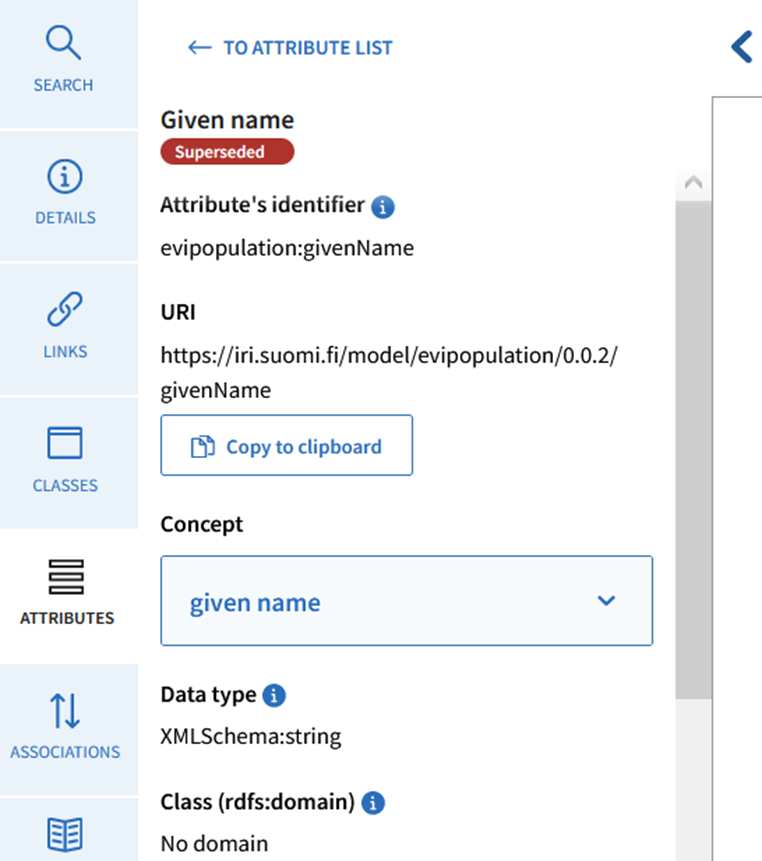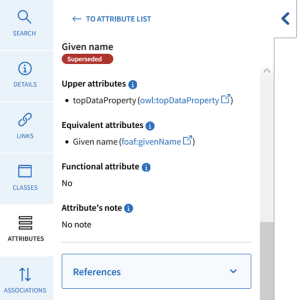The tool lists the attributes of the data model in alphabetical order in the Attributes tab. You can also see the number of the attributes.
Click the attribute of your choosing to see the more specific information of the attribute, for example:
- Name of the attribute
- Attribute identifier in the Data Vocabulary Tool
- Long identifier, IRI address: The IRI-address is a unique address for the attribute on the internet.
- With the IRI address, the attribute can be used as reference from outside the Data Vocabulary Tool, in, for example, machine-readable interfaces.
- Concept: Link to the concept in the Terminologies tool, if the attribute has been linked to a concept.
- Data type
- Describes what format the values of the attributes can have. For example, it is possible to require that the value is an integer, string, URI, date, etc.
- Class
- Describes the class the restriction refers to if the attribute is used to restrict the use/meaning of a specific class in a data model.
- Upper attributes: The name of the upper attribute and link to the upper attribute.
- A semantically more general attribute than this attribute. For example, identity code > personal identification number.
- Equivalent attributes: The name of the equivalent attribute and link to the equivalent attribute.
- Other attributes that are semantically similar to this attribute. For example, shoe size - shoe number.
- Functional attribute: Boolean indicating that the attribute can only have one value. For example, “pi” -attribute must always equal “3,14”.
- Attribute’s technical note:
- Textual description of the resource or the functions that provides further information on the resource and its usage. For example, a use case or other information that can not be concluded from the description of the concept (the link to the terminology).
- References: the drop-down menu shows the resources that have used this attribute.
- Created: The date and time when the attribute was created.
- Last modified at: The date and time when the attribute was last modified.
- Work group comment: Comments and instructions for other users editing the attribute of the class. Shown only to the logged-in users of the contributor organisation.
- Contributors: Organisation(s) who own(s) the content and maintain(s) it in the Data Vocabularies Tool.
If you want to give feedback to the contributor organisation, click Give feedback on the attribute link. The Data Vocabularies Tool will open a link to your email and the email of the contributor organisation already given in the recipient field.

